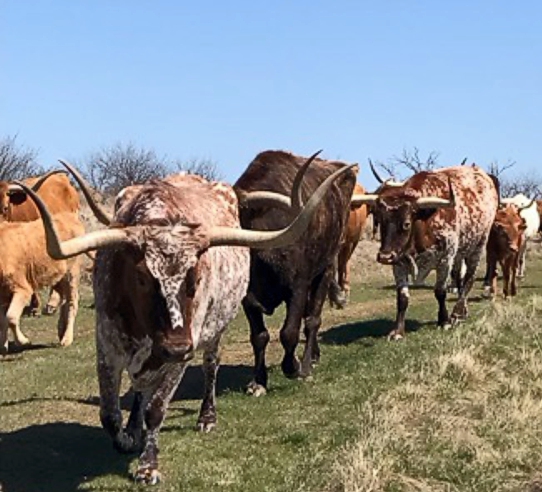Cowboys and Comanches on the Great Western Trail: A Time to Heal

Former warriors from opposing cultures met in a tenuous peace as Texans, whether white, black, or brown, pushed their cattle past Doan's Store on the south side of Red River west of present Vernon, Texas, where a ford over what the Comanches called "the big sandy" made it easy to cross onto the Kiowa, Comanche, Apache Reservation. read more
A tenuous peace prevailed. Cattle, not the soldiers at nearby Fort Sill to the east of the trail, proved to be the common denominator between fighting men who chose not to fight. Hungry Comanches wanted healthy Texas beef to supplement the wormy flour, the culturally forbidden salt pork, and stringy, diseased beef of their government rations, while the Texans wanted to drive their cattle across the reservation without conflict with the Indians or the Indians stampeding their herds. Most of the time, however, the trail boss of every herd prevented this by offering the Indians a few beeves in exchange for the slow pace of their cattle moving across the lush grasslands of what is now Southwest Oklahoma.
It is perhaps due to the influence of Quanah Parker, former Quahada war chief and, during the time of the Great Western Trail, chief of all the Comanches, that the Comanches did not fight the Texans, though many still held grudges against the white men because the deaths of relatives had not yet been avenged. In 1884, gunfire almost erupted when a group of Comanches demanded horses and provisions from an outfit out of Charlotte, Texas as they crossed the reservation. T.T. Hawkins relates that tensions were lessened somewhat when George Saunders, a fluent Spanish speaker, began to communicate in that language with the leader of the Comanches, who then invited Saunders into his tipi where they settled matters peacefully. The Texan and his Comanche host talked of battles they had either heard of or been involved in themselves between the two former enemies. What could have ended in conflict was settled between two men whose war exploits were highly respected by each. Saunders offered a horse and supplies to the Comanches. After that council ended, "about twenty young bucks," according to Hawkins, "came and helped to swim the cattle across the Canadian River. A number of our horses bogged down in the quick sand and had to be dug out, which sport the Indians enjoyed immensely. When the work was finished, they gave us an exhibition of their riding." The year before, Texas cowboy Daniel P. Gibson met Quanah Parker on the trail at one of the several camps where Comanches gathered. The chief wanted "wohaw, heap fat, heap slick," after which Gibson's trail boss T.J. Burkett motioned for Gibson to do as Quanah requested and cut a fat steer out of the herd. "Hundreds of cowboys knew Quanah Parker," Gibson recalled, "and he had scores of friends among the white people."
In 1878, the year that 75,000 head of Texas cattle passed by Doan's Store on the way to the pens at the railroad in Abilene, Kansas, sixteen-year-old Robert Lemond of Jack County was among the cowboys driving the herds. "The first night in the Indian Territory, the Indians frightened the herd and a grand stampede took place." Trail boss George Atkison told his men not to retaliate against the Indians, but to give them the cattle they wanted after the herd was gathered and shaped up for moving north again.
When old enemies saw each other up close and as fellow human beings on land where the blood of both cowboys and Comanches had been spilled, they could relax and enjoy the fruits of peace, with firearms reserved for game and rattlesnakes, as Texas cattle meandered along the Great Western Trail through the Kiowa, Comanche, Apache Reservation.
